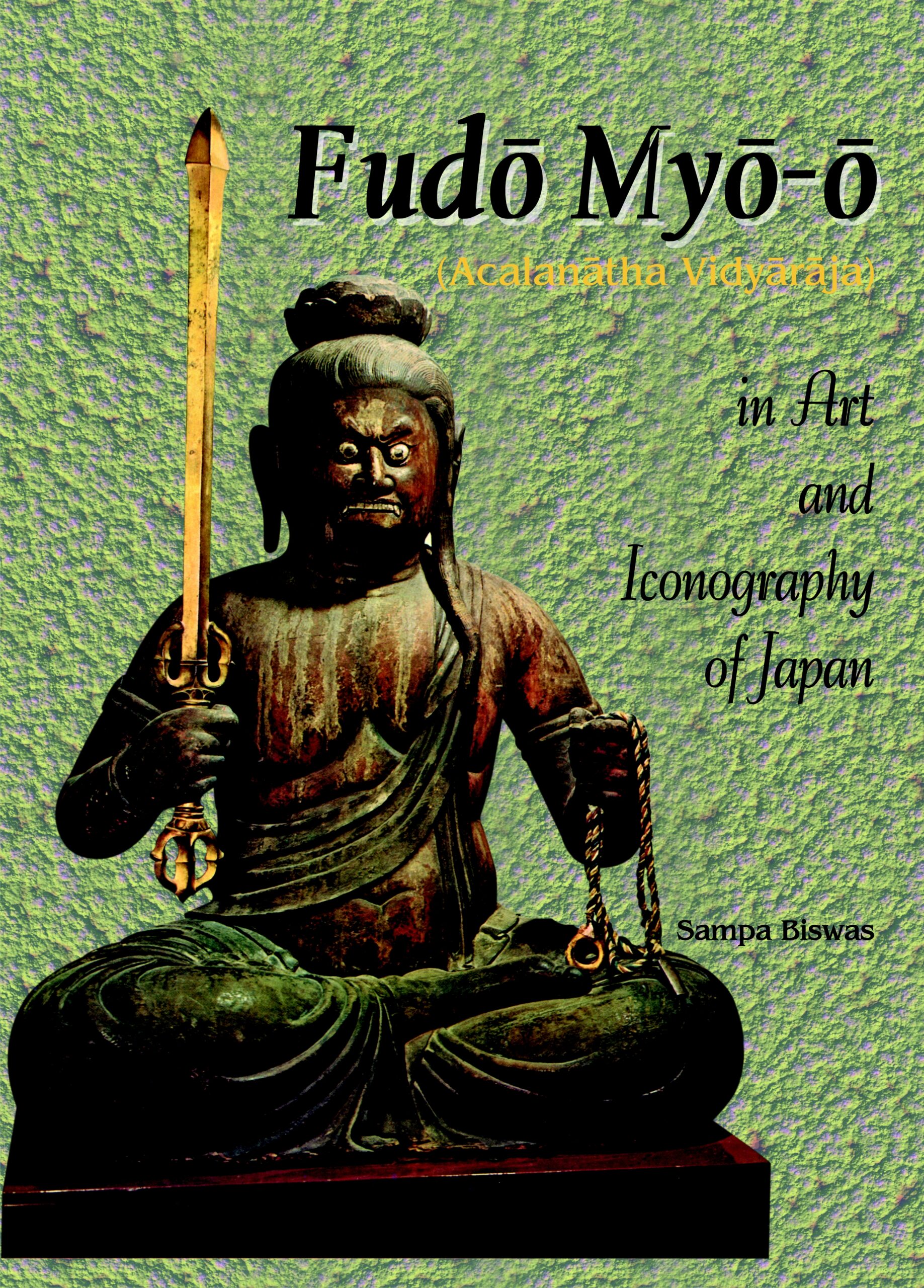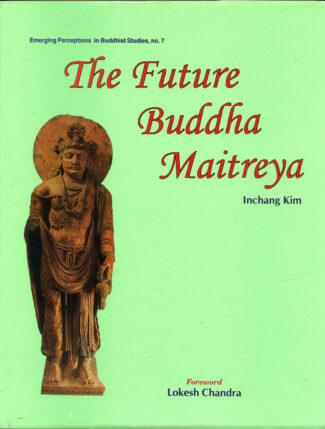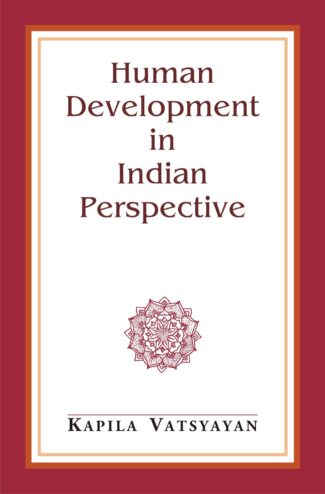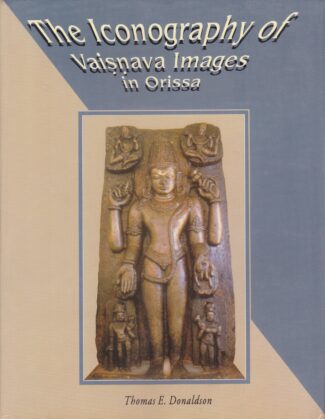Showing 41–50 of 122 results

The book discusses the introduction of Buddhism in Japan and its gradual transformation in esoteric doctrines. It also describes Fudo’s iconography, symbolic instruments, mudras, attendants, etc. This work describes the remarkable sculptures, paintings and woodblock prints of Fudo from Heian period.
Shingon Buddhism — esoteric Buddhism brought to Japan from China during the early ninth century — inspired a new spiritual energy that found expression in varied forms, especially in art and iconography. A radical change occurred with the introduction of new deities, among them the Five Great Kings, the most important of them being Fudo Myo-o, the conqueror of all disasters and evil. This book is a study of the concept, iconography and decoction of Fudo in art.
Beginning with a detailed account of the origin of Buddhism and its introduction into Japan, the book focuses on development of esoteric Buddhism in the country. It delves into the uniqueness of Shingon Buddhism rituals which try to evoke the vitality of the three mysteries in the body, speech and thought, the mysteries being transmitted orally from the master to the disciple. Describing Fudo Myo-o as discussed in Buddhist literary sources from India, it takes up his visual representation in painting and sculpture. It discusses the representation of his attendants in art and iconography, symbolic instruments associated with the god in his depiction and interpretations of the mudras (hand gestures, postures, emblems) carried by Fudo. It explains the esoteric meaning attached to various ideas and concepts represented in the visual images.
Supported by numerous illustrations, this detailed and thorough study would enthral students and scholars of Buddhist art and iconography.

The book highlights the historical evolution of different phases of Maitreya iconography in various regions of the Indian subcontinent. Dr. Kim combines extensive field-work with diverse literary sources to thoroughly explore some problematic issues.
Maitreya is not just one of the myriad divinities of the Buddhist pantheon; he is revered by the devout as the Buddha of the fifth world cycle, the Ultimate Buddha, the Much-Awaited Deliverer, who (like Kalki a would-be incarnation of Visnu in Hinduism) will descend on the earth, in human form, sometime in the distant future and lead people to both enlightenment and the final nirvana. The cult of Maitreya, however, goes as far back as to the second century bc, and even beyond, when perhaps, his images, in varying anthropomorphic forms, came to be chiselled alongside the earliest sculptural representations of the Buddha and Boddhisattvas. Here is the first iconological study to exclusively focus on the Maitreya phenomenon in almost the whole range of Buddhist sculptural art. Exploring the historical evolution of the Maitreya cult, the book admirably highlights the different phases of Maitreya iconography with an in-depth analysis of the images from various regions of the Indian subcontinent Gandhara, Kashmir, Mathura, Sarnath, Nalanda, Orissa, Western Deccan and South India. Dr. Inchang Kim has skilfully combined his extensive fieldwork with diverse literary sources to contextually explore some of the problematic issues to their last thread like, for instance, the genesis of Maitreya cult, its nature in the pre-Christian era, and its role in Hinayana, Mahayana and Yogacara Buddhism. Also spelling out the symbolism of Maitreya iconography, the study specially underscores the iconographic attributes that help not only identify Maitreya, but also distinguish the Buddha of the Future from other Bodhisattvas. Together with a generous supplement of visual material comprising over 240 photographic reproductions with an extensive bibliography and index, the book is invaluable to art historians, connoisseurs/specialists of Buddhist sculptural art and scholars of Buddhist studies.

The volume features miniature paintings from the Neotia Collection, Kolkata displayed at the Kala Mandapa of Jnana Pravaha, Centre for Culture studies, Varanasi which are remarkable examples representing prominent painting schools and styles of India. Presenting excellent reproductions of art masterpieces of great historical value, it also throws light on the sources and influences of miniature painting in India and their thematic preoccupations.
Indian miniature paintings have a rich and variegated tradition that ranges from the earliest known examples painted on slender palm leaf folios in Buddhist monasteries to Company paintings. Glimpses of Paintings from Kala Mandapa features miniature paintings from the Neotia Collection, Kolkata on display at the Kala Mandapa of Jnana Pravaha, Centre for Cultural Studies at Varanasi, that include some remarkable examples representing prominent painting schools and styles of India: the palm leaves and wooden manuscript covers of the Pala style (ad 800-1200), 16th century Tibetan Buddhist thangkas, paintings of the major Rajasthani schools, and Ramayana paintings and portraits of the Pahari style. It presents excellent reproductions of art masterpieces of great historical value such as a dated sketchbook of a Nevari thangka painting (15th century), beautifully-illustrated folios of the Devasano Pado Bhandara Kalpasutra and the Samgrahani-Sutra, and the Ragamala and Amaru Sataka illustrations of the Malwa School. The introduction of the portfolio is by Dr. Anjan Chakraverty, of Visual Art Faculty, Banaras Hindu University. The publication throws light on the rare fare that the Kala Mandapa paintings offer: their insight into the literary and cultural sources and influences of miniature painting in India, thematic preoccupations of such paintings, their use of space, colour patterns and symbols, and their overall effect.

Based on decades scientific research this book projects India as the foremost country of the world where diamonds were discovered first. It explains past beliefs, present status of diamond mines, cutting-polishing industry, trade & marketing, and talks about future challenges and remedies to regain original glory.
India, for many millennia, was the diamond capital of the world and controlled the global diamond business. Indians were the first to discover, mine, curate and market diamonds in the world, and were the first to discover that diamond can be cut only by diamond, and can be polished with its own powder. Vedas, Upanishads and epics stand testimony to it. Diamonds were the quintessential luxury of the Indian royalty. Kohinoor, (Mountain of Light), Hope, Great Moghul, Orloff, Sansi, Hastings, Pigott and Akbar Shah-Jahangir Shah had unparalleled place in the annals of Indian and world history.
Till the seventeenth century, the Golconda Fort City in south India was the World Trade Centre of diamonds and was a dream destination for “who is who” in the diamond business. Though at present, diamond business is about $ 72 billion plus worldwide, India has very little to offer to this market size. New nations/countries are on the block and India has become a trivial entity in diamond production from the colonial period due to the monopolistic policy pursued by the British in favour of the new discoveries made in South Africa, and the socialistic policies of Independent India. Even the environmental concerns stood as stumbling blocks against the growth of Indian diamond mining industry.
The present study explores exhaustive data, based on a decade-long serious research, targeting common man. It brilliantly attempts to make one aware about the birth, history, glory, places of concentration, applications of diamond and about the present Indian diamond cutting and polishing industry. The book also introduces the readers into the reality of imitations, artificial diamonds, and discusses such products in detail. It delves deep into the identification and valuation techniques of diamond, and the tools used for the same. Efforts are also made to present many a superstition associated with diamonds, and to brief those diamonds that have some bearing on history.
After decades of Independence, India has failed to regain its lost splendour and leadership position. There is a need to bring changes in its approach to this industry to put it back on track and compete with the present world leaders. The author has given special attention to analyse the present diamond scenario in India and suggests remedies

The study, beautifully illustrated, focuses on the masks of gods, goddesses and demons worn by the Newars of Kath-mandu Valley. It deals with contexts in which the dancers wear the masks and with legends concerning the dances.
The presence of masks as both ritual and art objects is attested among the traditions of mankinds oldest civilisations. Cutting across cultural and geographical barriers, they have exhibited a remarkable range and diversity of meanings throughout history. The present study focuses on the masks worn in the Kathmandu Valley by the main ethnic group, the Newars. A specific aspect of the Newars is that, despite the political dominance of Hinduism, Buddhism is still alive. The masks represent gods, goddesses and demons, but never the dead or the ancestors. The author argues that the reason for the absence of figurations of the dead or ancestors is to be explained by the funerary rituals. There are no memorial monuments or other objects which perpetuate the memory of the deceased: It is through rituals performed after their death that the memory is preserved. The distinction is made between statue-masks and the masks worn during ritual dances. The author focuses on the contexts in which the masks are worn by professional dancers and draws attention to the legends which explain the origin of the dances and their ritual role. Detailed descriptions are given of the dances performed during different festivals in the localities of the Kathmandu Valley. The masks then worn are destroyed and re-made ritually each year by painters. Anne Vergati explains the relation between the dancer as a social person with a social identity and the mask which represents a god or a goddess. The mask is not supposed to hide the face of the dancer but to transform his identity in such a way as to make of him a deity. Supported by numerous illustrations in colour, the book will appeal to historians and connoisseurs of art as well as to scholars of the cultures of the Himalayan regions.

The book explores the ancient Indian art from the perspective of gender and delves into the development of engendered representation in art, with the emergence of aesthetic and sexual archetypes and stereotypes of women: goddesses, mothers, wives, nuns, semi-divine yakshis, ogresses and others by giving insights into the intention, agency and patronage patterns in early Indian art.
The book is an exploration of ancient Indian art from the perspective of gender. It focuses on the period from 181 bce to ce 320 a period of great turmoil in the politico-economic, socio-cultural and religious spheres that gave rise to contesting ideologies and gender complexities in ancient India. It delves into the development of engendered representation in art, with the emergence of aesthetic and sexual archetypes and stereotypes of women: goddesses, mothers, wives, nuns, semi-divine yaksis, ogresses and others. It examines the nature of the stereotypes and archetypes that were constructed on the basis of gender roles rather than on sex and how these were reflected by various attributes of the representations nudity or its absence, ornamentation, gestures, direction of gaze and context. It gives interesting insights into the intention, agency and patronage patterns in early Indian art.
The volume with its scholarly approach, providing fresh insights into early Indian art, will prove useful to scholars, students and researchers of Indian art and history alongwith the cognoscenti.

This book, a collection of six lectures Dr Kapila Vatsyayan made at different UNESCO seminars and two reports, presents, discusses, analyses and prognosticates the varied aspects of human development from the perspective of a developing country.
This book, a collection of six lectures Dr Kapila Vatsyayan made at different UNESCO seminars and two reports she prepared for UNESCO, presents, discusses, analyses and prognosticates the varied aspects of human development in India and other developing nations. She has made some commendable observations and suggestions with a futuristic view on UNDPs Human Development Report 1990 which defines and measures human development.
Through these papers and reports, Dr Vatsyayan has attempted to chart out a new perspective as far as development is concerned from the viewpoint of developing countries. The Western paradigms in defining development do not fit the frame of these countries. Culture, arts, oral wisdom, all should come to play a crucial role in defining, planning and executing developmental programmes in such countries, and in defining their educational status.
In addition, the volume provides a historical glimpse of Delhi and addresses the issues of cultural heritage and cultural lifestyle of the National Capital Territory of Delhi. In a nutshell, Dr Vatsyayan makes the readers travel with her continuous UNESCO engagement, over a period of sixty years.

With surveys of diverse Buddhic and Hindic temples in India, Sri Lanka, Indonesia, Myanmar, Thailand, Vietnam, and even Malaysia, the book shows how the basic element in their architecture: the PLAN was fraught with iconographic import and input, necessitating the guidance of authoritative compendia, the arcane knowledge of the sthapati (priest-architect), and other complex procedures steeped in symbolism.
Over the rolling centuries, Buddhism and Hinduism, two of the worlds oldest sustained faiths, came to evolve a complex, yet precisely defining, iconic language: not just for figural representations, but for the architectural plans of their temples and monuments as well a language that allows interpretations of geometric proportions. Here is the first ever effort to brilliantly unravel the iconic idiom involved in the architectural plans of Buddhist and Hindu temples and monuments of India and the Indianized States of Southeast Asia. With his indepth surveys of diverse Buddhic and Hindic temples in India, Sri Lanka, Java (Indonesia), Kambuja, Myanmar, Thailand, Vietnam, and even Malaysia, the author shows how the basic element in their architecture: the PLAN conceived within a cosmological framework was fraught with iconographic import and input, necessitating the guidance of authoritative compendia, like the Manasara and the Mayamata, the arcane knowledge of the sthapati (priest-architect), and many other complex procedures which all were steeped in symbolism. In analysing the architectural plans of these temples, Professor Bunce also highlights the various related iconographic considerations, like orientation, basic geometric forms, construction methods, rules and ratios, the non-congregational necessity, the high place as a consideration as well as the cave besides a number of viable influences which exert various amounts of control, e.g., textual, philosophic/theologic, numerological, astrological/astronomical, regionality and, most importantly, the mandala. Generously supported by visual material comprising as many as 400 figures and line-drawings, Professor Bunces book is veritably a monumental, off-beat exercise of enormous interest to iconographers as well as the historians/specialists of South and Southeast Asian temple architecture.

This work analyses the Vaisnava iconography of Orissa. Vaisnava iconography proper including Hari-Hara and other composite images and those of Visnus female consorts; images of Visnu in his avataras; depiction of Balarama, Krsna and Jagannatha; and iconography of the secondary figures like Garuda and Hanumana.
This work is a well?researched attempt to analyse the Vaishnava iconography of Orissa which is unique in that there are to be found an overwhelming number of Vishnu images in the region despite paucity of Vishnu temples and inscriptional evidence suggesting royal patronage. Dr. Donaldson here undertakes a detailed study under four heads: Vaishnava iconography proper including Hari?Hara and other composite images and those of Vishnus female consorts; images of Vishnu in his different avataras; depiction of Balarama, Krishna and Jagannatha; and iconography of what are termed secondary figures like Garuda and Hanumana. He presents various iconographic charts throughout the book on the basis of textual description of the many images and their representations in sculpture with a number of photographs of the images studied, he provides details on the physical attributes of each group of images and specific images and their evolving iconographic and stylistic peculiarities: such as the decline of a particular motif and the emergence of another depending on the popularity of sects. The author also traces with keen interest the influence of Vaishnavism on the iconographic programme and rituals of Shaiva temples, resulting in even joint worship of Vishnu and Shiva. For each type of iconography, the book cites examples of different Orissan temples and discusses the images in them. The book would be of immense interest to scholars of religious studies and particularly those concerned with Hindu iconography.

The book relates the diverse experiences of Mr. Tzannis Tzannetakis, a former Greek Prime Minister, in India: he witnesses centuries-old marvels, landmarks of its long religious-cultural tradition; and his response is profound and genuine.
A journey to India . . . is quite unlike a journey to any other land . . . this sentiment expresses the uniqueness of a visitors experience of India. For, among other things, India is a perpetual mystery to him from the beginning; he wades through the mystique and out of it; and he is never free of it. For Mr. Tzannis Tzannetakis, a former Prime Minister of Greece, India is this and much more. His informal experiences presented here are diverse and steeped in the historic-cultural flavour special to India. He sees its centuries-old palaces, forts of ancient maharajas, of the glorious Mughals; the unparalleled cave monuments of Ajanta-Ellora with their exquisite carvings, the breathtaking sculptural decorations and the architectural dream of Khajuraho; the grandeur of the Taj, a wonder in white marble; the exotic deserts of Jaisalmer; the heart of holy India, Banaras, with the ever-flowing Ganga; the marvel of Delhi which amalgamates the old and the new. His response is, likewise, rich with a range of tones; he not only admires the material landmarks of ancient India but breathes in the spirit of the past the old delight, the royal romance, the dignity, valour in that chivalry . . . His is not simply a discovery of India but an analysis of Indias time-tested values and its modern message in order to understand India in the real sense its unique past; the India of today, of the traditional and the modern; and the India of the future . . . its goals, aspirations. The authors tone is wonder-struck but, at the same time, genuine and realistic. He captures the essential India and not just its forms and colours to present a delightful, critical and sensitive picture.